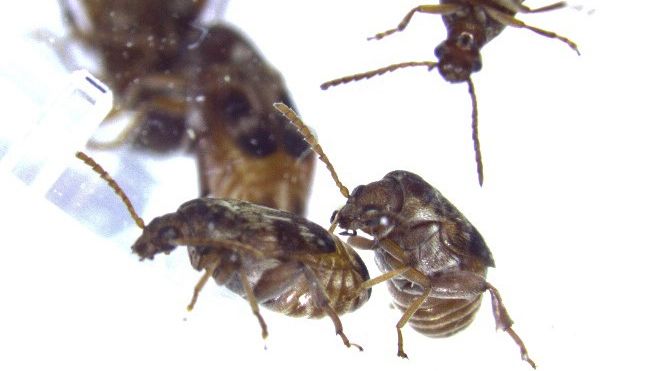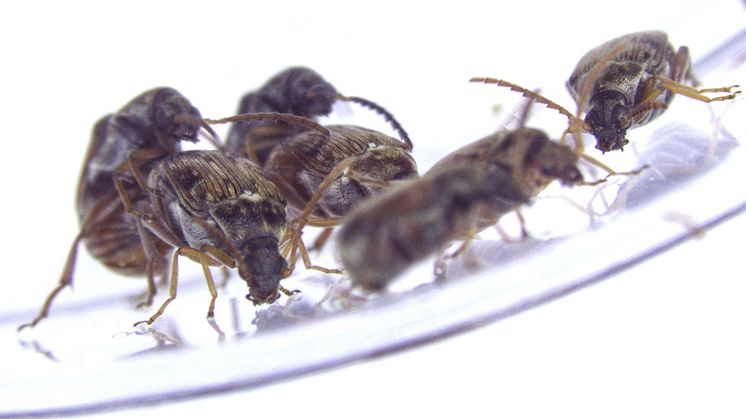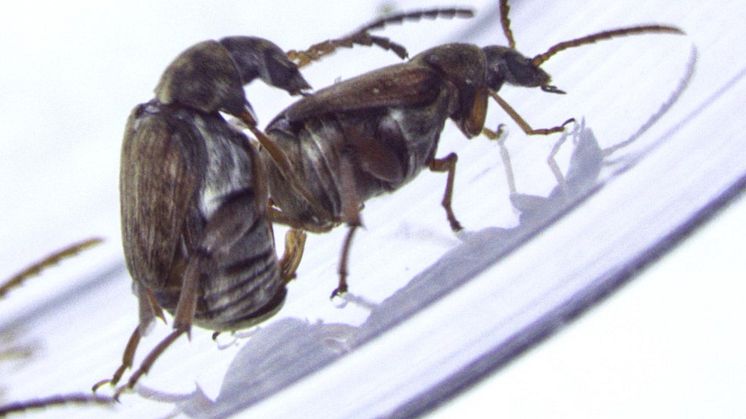Press release -
Why animals court their own sex
Same-sex sexual behavior is common in animals but puzzles evolutionary biologists since it doesn’t carry the same obvious benefits as heterosexual courtship behavior that leads to mating and production of offspring. A study from Uppsala University sheds new light on the pervasiveness of same-sex sexual behavior in the animal kingdom.
Same-sex sexual behavior (SSB) is behavior usually displayed during heterosexual mating and courtship rituals, but instead displayed towards individuals of the own sex. SSB is common in animals ranging from insects to mammals, presenting somewhat of an evolutionary enigma. A new study from researchers at the Department of Ecology and Genetics at Uppsala University now sheds light on the pervasiveness of SSB in the animal kingdom. The researchers hypothesized that, because males and females share most of their genes, SSB may occur in one sex because its underlying genes carry benefits when expressed in the other.
The idea was tested in a small seed beetle where both males and females express low levels of SSB. The researchers used artificial breeding on either males or females to create genetic strains with increased tendency to display SSB. Using these strains, the researchers showed that when a particular sex had been bred for increased SSB, siblings of the opposite sex enjoyed an increase in reproductive performance.
‘For example, we noted that males that had been bred for increased same-sex mounting behavior were less discriminating when given a choice between courting a male or a female in later tests, while their sisters laid more eggs and produced more offspring than before’, says David Berger, Assistant Professor at the Department of Ecology and Genetics at Uppsala University and one of the researchers behind the study.
The findings thus support the idea that SSB may be prevalent in one sex because the genes regulating the behaviour are preserved by natural selection through their benefits in the opposite sex, pointing to a general mechanism maintaining multiple forms of SSB across a wide variety of animals.
For more information, please contact:
David Berger, Assistant Professor at the Department of Ecology and Genetics, e-mail: david.berger@ebc.uu.se tel: + 46 18-471 2662
or Alexei Maklakov, Senior Lecturer at the Department of Ecology and Genetics, e-mail: alexei.maklakov@ebc.uu.se tel: + 4618-471 2672
Sexually antagonistic selection on genetic variation underlying both male and female same-sex sexual behavior, BMC Evolutionary Biology, DOI: 10.1186/s12862-016-0658-4
Topics
Uppsala University -- quality, knowledge, and creativity since 1477
World-class research and outstanding education of global benefit to society, business, and culture.
Uppsala University is one of northern Europe's highest ranked academic institutions. www.uu.se



